-
The Dark Side of Debate
Text by Norman Kietzmann
A truly spectacular location for the first night of the Dark Side Club on Saturday, August 24th: Palladio’s Villa Foscari from 1560, or “La Malcontenta.” (Photo: Torsten Seidel)
-
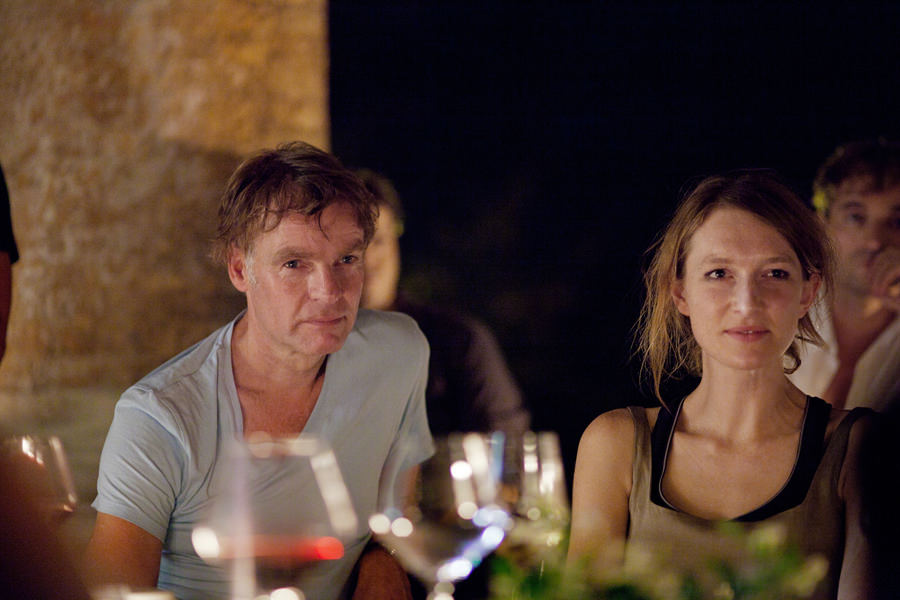
Winy Maas and Alison Crawshaw.
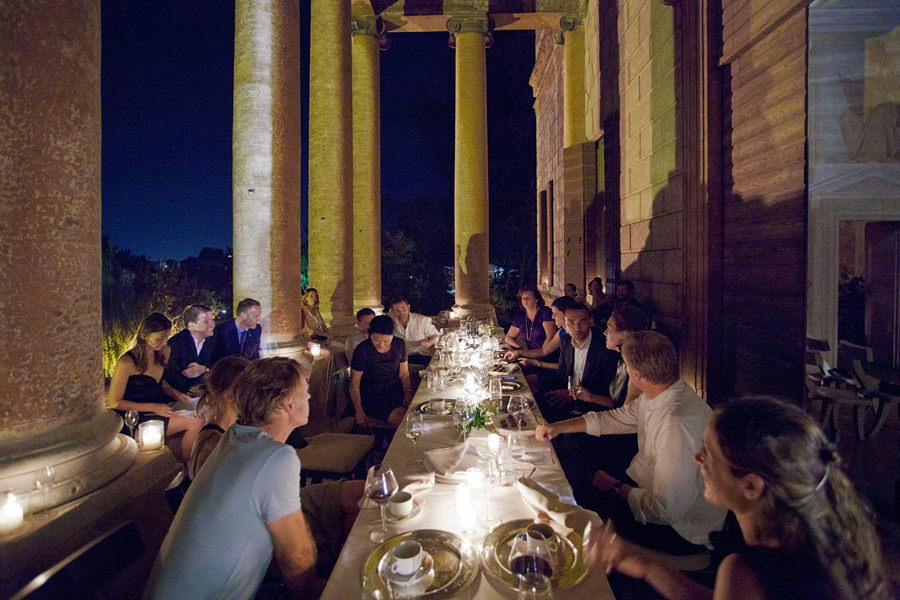
The discussion about South America included Gary Bates, Alejandro Aravena, Toshiko Mori, and Winy Maas at the dinner table. Giulia Foscari was a splendid host.
The Dark Side Club is the most exclusive and idiosyncratic event during the opening days of the Architecture Biennale. On three evenings, a group of 20 people meet for dinner followed by a salon. It’s not only the discussions that stretch long into the night that make it special. It’s the fact that for once, its prominent participants do not have to mince words. Press conferences are like cotton balls: cuddly soft. Everyone dutifully speaks their rehearsed sentences, offering brief answers to select questions, and then leaves smiling into the cameras. Architects at the biennale opening don’t act too differently from the actors at the subsequent film festival in Venice, presenting their newest screen projects. Everyone pretends to be part of a cheerful family. Should a critical word still happen to escape, it is simply smiled away, as if nothing happened.
It makes sense that the Dark Side Club has emerged during the past three biennales as a corrective for the typical manicured presentations. The salon, hosted by architectural consultant Robert White, brings the protagonists of the day to the table. In the rooms of a timehonored palazzo, they dine, drink, and then
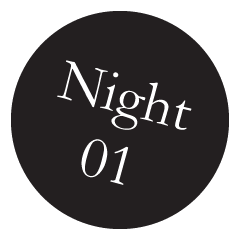
-
debate — all in a way that is casual, bold, and refreshingly un-academic.
Admittedly, the club has no decision-making power and can hardly reinvent the wheel in a space of two or three hours of discussion. But what happens here is an exchange among creators who meet on equal terms. Instead of having to promote themselves and their projects, they can throw out whatever is on their mind. Provoking and criticizing is allowed, without others leaving the table in offense. To structure the salon, each evening is moderated by a different “curator,” who selects and introduces the overarching theme and gets the discussion rolling.
The first evening of this year’s Dark Side Club took place on the Venetian mainland. The group met on a sweltering evening under the portico of Villa Foscari Malcontenta, the Palladio masterpiece in the south of Mestre, where Zaha Hadid presented her Aura installation in 2008. The evening was led by Gary Bates, who sees in South America’s raw material and energy resources the motor for an emerging “Golden Age” that could significantly influence urban planning. Discussion participants
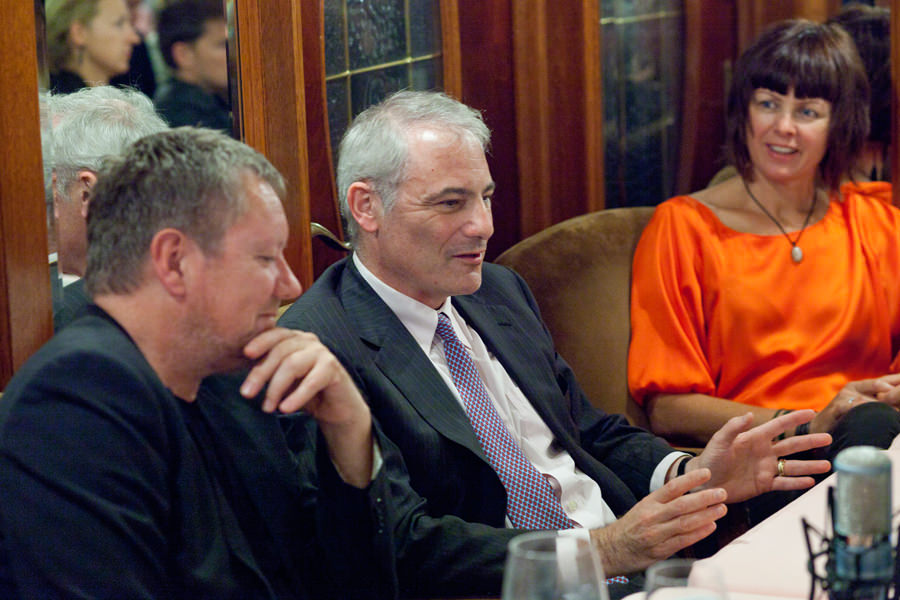
Aaron Betsky deep in discussion.
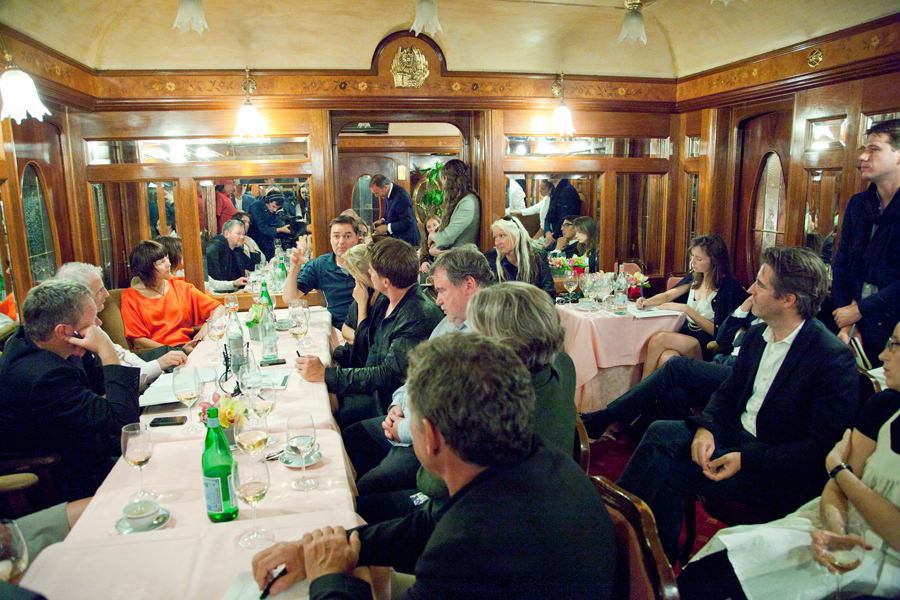
Sunday evening in the back room of a restaurant close to San Marco.
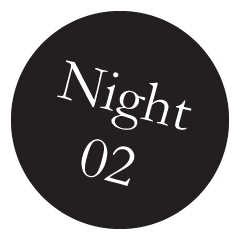
-
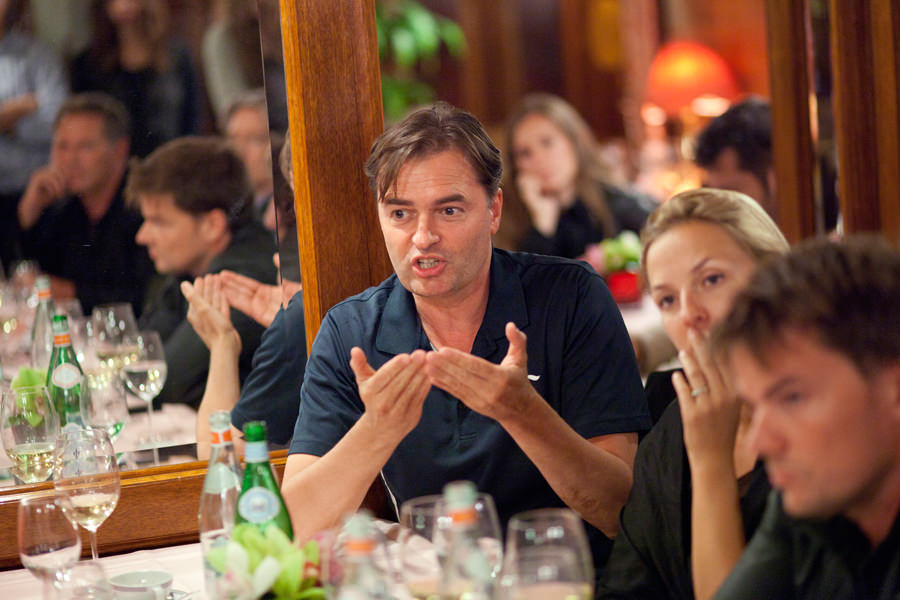
Patrik Schumacher...
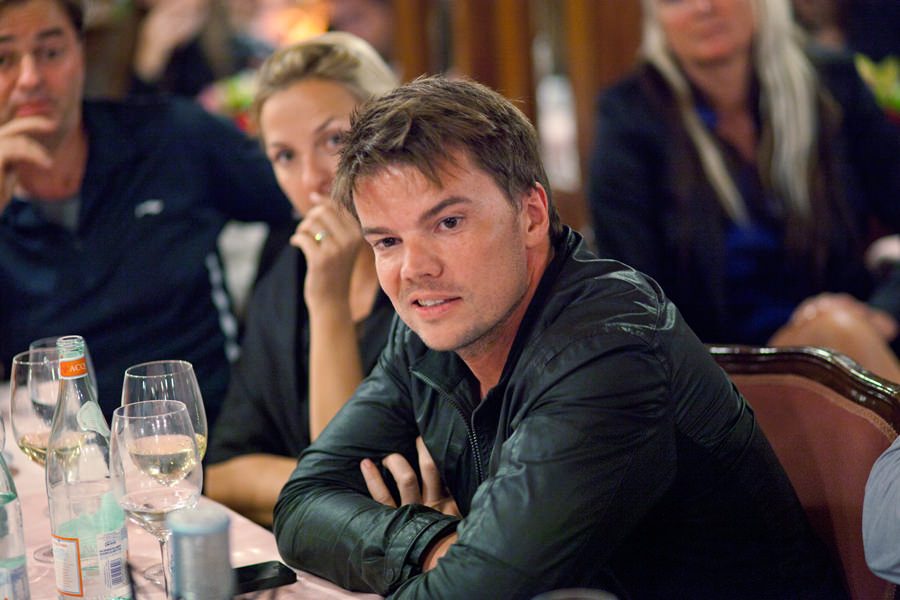
...and Bjarke Ingels.
included Alejandro Aravena (Elemental), Winy Maas (MVRDV), Toshiko Mori, Giulia Foscari, and Louis Becker (Henning Larsen).
The two following evenings were improvised. The owner of the palazzo panicked two days before the first salon and cancelled the reservation. Perhaps she suspected that the evenings could be long and loud. The club was suddenly without a location — not an easy situation to remedy during the opening days of the biennale, for which most palazzi are booked for exhibitions and events months in advance. So the club convened in a restaurant, resulting in a few charming intercultural discrepancies.
In northern countries it is customary after dining out with friends to order a bottle of wine and to continue the conversation, lingering at the table in the restaurant. In Italy, however, after the espresso it is really over. Then it’s off to bed. A casa. The motley group of architects in the back room of a restaurant not far from the Piazza San Marco indulging in after-hour wine and heated discussion, earned looks from the restaurant staff and owner as if a group of Martians had invaded their restaurant.
-
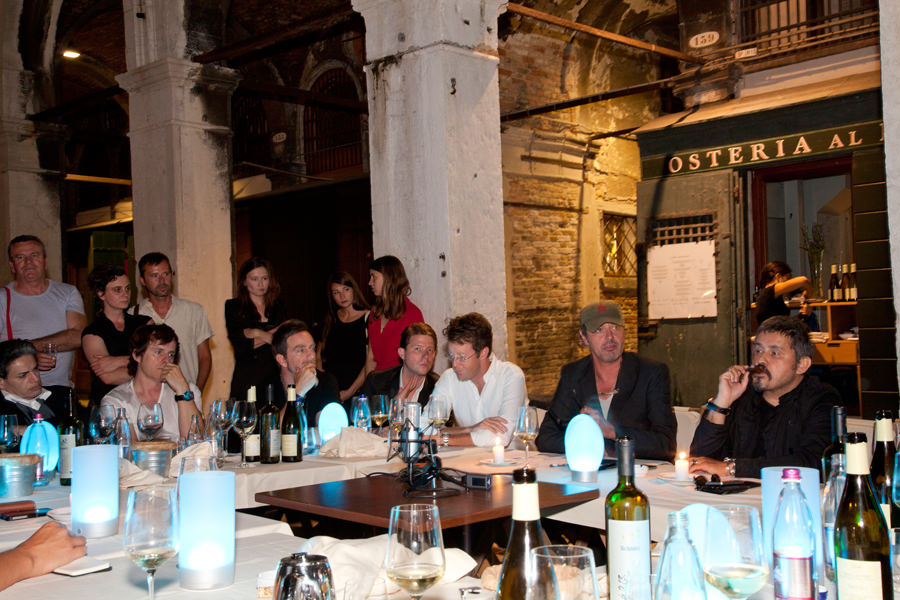
The third dinner was located in an almost informal setting in front of a small restaurant close to Rialto, overlooking the Grand Canal.
This second salon evening addressed the line between art and architecture and was moderated by Kjetil Thorsen (Snøhetta). In 2007, Thorsen designed the Serpentine Gallery pavilion together with Olafur Eliasson, who joined the salon a bit later that night. “It is impossible to separate work into an architecture part and an art part,” said Thorsen, explaining why more teams and fewer individuals should be given credit for a creation. With participants such as Patrik Schumacher, Bjarke Ingels, Aaron Betsky (director of the 2008 Biennale), and Archigram veteran Peter Cook, the debate enjoyed a steady dynamic, as they dismantled the notion of artistic and architectural genius.
The salon was held in a restaurant on the third evening as well. This time it was not a back room, but right on a piazza with a view of the Canal Grande not far from the Rialto Bridge. François Roche, Hernan Diaz Alonso, and Mathias del Campo wanted to explore the possibilities of “Toxic Sublimini” with a “public performance in film noir style.” But just as the discussion between Peter Noever, Patrik Schumacher, and Tom Kovac was getting underway, the evening came to an abrupt end.
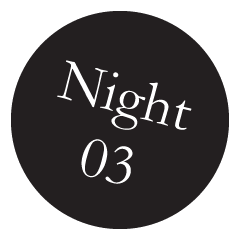
-
Shortly after midnight, the restaurant owner suddenly found the whole thing a bit too colorful and announced that he would close in five minutes. To prove he was serious, he removed the wine glass from the hand of a bewildered François Roche without further ado and banished the club into the fledgling night.

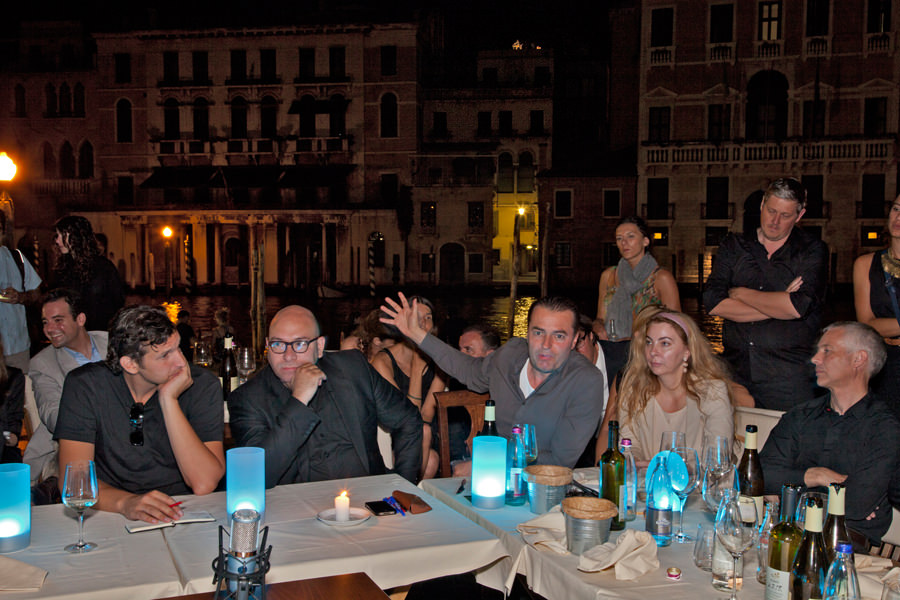
Just after midnight, when the discussion got interesting, the restaurant decided to close its doors... even to starchitects like Francois Roche and Patrik Schumacher. (All photos: Torsten Seidel)
-
Search
-
FIND PRODUCTS
PRODUCT GROUP
- Building Materials
- Building Panels
- Building technology
- Façade
- Fittings
- Heating, Cooling, Ventilation
- Interior
- Roof
- Sanitary facilities
MANUFACTURER
- 3A Composites
- Alape
- Armstrong
- Caparol
- Eternit
- FSB
- Gira
- Hagemeister
- JUNG
- Kaldewei
- Lamberts
- Leicht
- Solarlux
- Steininger Designers
- Stiebel Eltron
- Velux
- Warema
- Wilkhahn
-
Follow Us
Tumblr
New and existing Tumblr users can connect with uncube and share our visual diary.
»Where there is nothing, everything is possible. Where there is architecture, nothing (else) is possible.«
Rem Koolhaas
Keyboard Shortcuts
- Supermenu
- Skip Articles
- Turn Pages
- Contents


